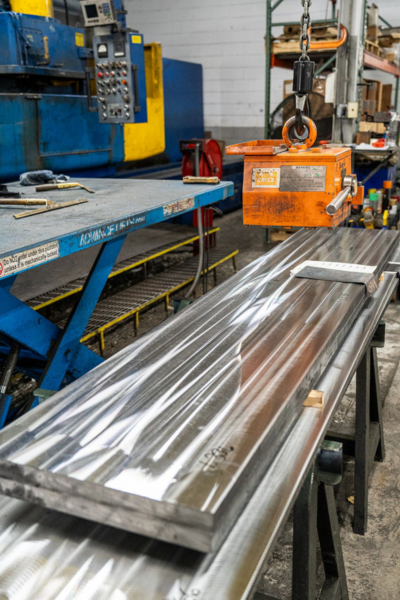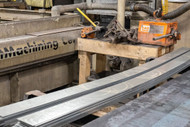Powder Metallurgy vs Conventional Steel: What’s the Difference?
Nov 6th 2025
When it comes to high-performance metals, not all steels are created equal. The method of manufacturing—whether through traditional ingot casting or powder metallurgy (PM)—directly impacts a steel’s quality, reliability, and performance. Understanding Powder Metallurgy vs. Conventional Steel is essential for knife makers, aerospace engineers, and manufacturers who rely on strength, toughness, and consistency in their materials.

Conventional Steelmaking: The Traditional Process
Conventional steel production begins with melting recycled steels in a large electric furnace. Elements such as chromium, vanadium, molybdenum, and cobalt are added to achieve the desired chemistry. The molten steel is then poured into massive molds called ingots, sometimes as tall as a person.
As the steel cools, it solidifies from the outside inward—much like a lake freezing along its edges first. This uneven cooling creates visible solidification patterns known as dendrites. In high-alloy steels, this process often leads to segregation, where some areas contain higher concentrations of certain elements. These non-uniform structures can become weak points, reducing toughness and creating inconsistencies in the final product.
Even after forging and rolling, segregation remains embedded in the steel’s matrix. For demanding applications, these discontinuities can lead to chipping, cracking, or premature wear.
Powder Metallurgy Steelmaking: A Modern Solution
Powder metallurgy takes a completely different approach. Instead of solidifying one large ingot, the molten metal is atomized into millions of tiny droplets using high-pressure gas. Each droplet solidifies individually, creating a fine, uniform microstructure.
The powder is then consolidated through a process called hot isostatic pressing (HIP), where extreme heat and pressure transform the powder into a solid block. This eliminates the segregation issues found in conventional steel. From there, the block can be forged, rolled, and processed just like traditional ingot steel—but with far greater uniformity and performance.
Advantages of Powder Metallurgy vs Conventional Steel
-
Eliminates Segregation
PM steels avoid weak planes, banding, and inconsistencies caused by slow solidification in large ingots. -
Enables Advanced Alloys
High-vanadium steels (up to 10%) cannot be made conventionally without cracking, but PM processing makes them achievable and stable. -
Finer Carbide Structures
Smaller, evenly distributed carbides lead to better edge retention and reduced chipping—critical for knives and cutting tools. -
Superior Wear Resistance and Toughness
By controlling microstructure, PM steels offer a balance of hardness and durability that conventional steels can’t match.
Applications in Knives and Aerospace
For knife makers, PM steels produce blades that hold an edge longer, resist chipping, and perform consistently from batch to batch. The fine carbide structure not only improves durability but also makes sharpening smoother and more predictable.
In aerospace and industrial applications, PM steels’ uniformity and strength provide reliability in components where failure is not an option.
Conclusion: A Better Path Forward
The debate of Powder Metallurgy vs. Conventional Steel is clear: PM steels deliver superior performance, reliability, and flexibility for advanced applications. By eliminating segregation, enabling new alloy systems, and refining microstructures, powder metallurgy has redefined what’s possible in modern steelmaking.
At Niagara Specialty Metals, customers have access to premium PM steels—such as MagnaCut, CPM 3V, and S35VN—processed with precision to meet the highest industry standards. Whether you’re a knife maker, tooling engineer, or manufacturer, Niagara provides the foundation your products deserve.
Explore Niagara Specialty Metals’ full range of powder metallurgy steels and discover how they can elevate your next project.




